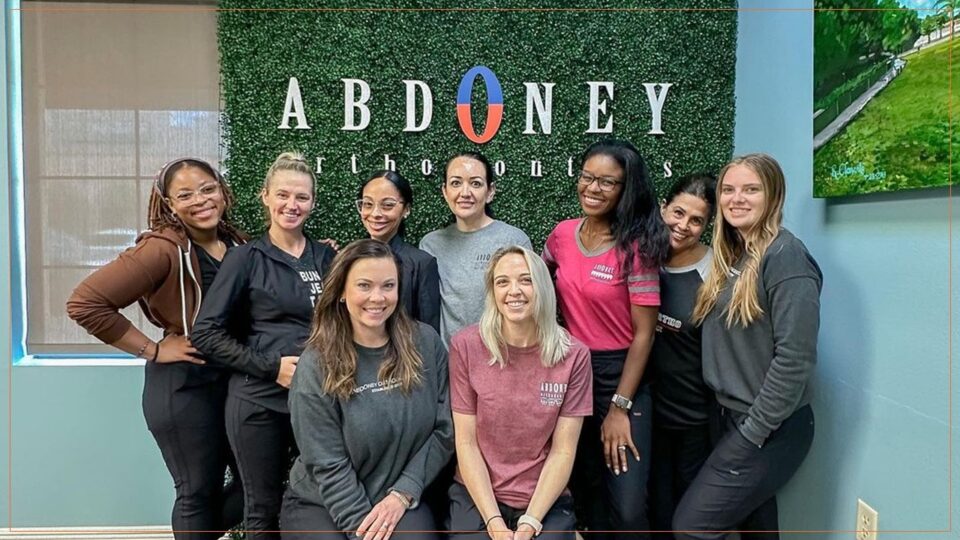A recent AAO member survey asked members to indicate whether a variety of conditions were impacting their practices or were expected to do so in the near future.
Difficulty hiring qualified staff received a moderate or significant problem ranking from 78 percent of survey respondents. The orthodontic specialty, of course, is not alone in facing labor issues, with many industries today struggling to find workers in the wake of the 2020-21 “Great Resignation.”
Parents challenged by childcare and virtual school issues may have given up on employment, at least in the short-term. Workers fearful of contracting COVID or exposing vulnerable family members, those struggling to recover from long COVID, and others who declined to return from early pandemic furloughs are absent from the workforce.
A recent economic analysis found that while the unemployment rate is just 0.4 percentage point higher than it was before the pandemic began, there are 1.7 million fewer people in the labor force than would be expected given the state of the economy.1 As these employment trends have taken hold, the AAO recently established the Orthodontic Staff Shortage Task Force to focus on developing resources and tools for members that would support recruitment of well-qualified employees.
“Beyond finding the best-qualified applicants for orthodontic staff positions, we also want to help AAO members discover the approaches for hiring, training and employee retention that will work best for their practices as we face today’s labor market,” says Dr. Doug Depew, chair of the Orthodontic Staff Shortage Task Force.
Initially, the task force wishes to help orthodontic practices get off to a strong start in hiring this year, before many potential new patients may be ready to start treatment during the late spring and summer. AAO members serving on the task force would like to offer solutions that are working effectively in their practices. The tips below are from Dr. Depew and Drs. Trista Felty, Scott Schulz and Robert Selden.
Tips for Finding Top-Quality New Members of Your “Dream Team” (subhead)
#1. Take a close look at your current team’s job descriptions and think outside the box before recruiting new hires.
“Assess how tasks are divided among your current team,” Dr. Felty suggests. “For example, if your state or province requires certification to do certain procedures, look at what procedures can be delegated away from your certified assistants to non-certified staff members.
“This allows your trained staff to focus on the tasks that only they can do and delegate the other items to people who may be easier to recruit and can then be trained on the job,” adds Dr. Felty. “Their tasks may include taking records including photos and scans; X-rays (which may just require a weekend course for certification); sterilization or lab work such as retainer fabrication; and 3-D printing. It can also be helpful to have a ‘rover’ – or an extra pair of hands in the clinic to help turn over chairs more quickly, by providing items needed chairside or helping type notes or book appointments.”
#2. Recruit from within. Ask your team if they know of any good candidates for open positions.
“Current team members tend to recommend people they know can do the job,” says Dr. Selden. “Team members want new co-workers with whom they can work easily.”
Dr. Depew also focuses recruitment efforts on current employees.
“Some of our employees’ friends are already familiar with the practice and its culture,” says Dr. Depew. “These new employee candidates come pre-screened as our team member knows them well and likely understands their current situation as well as their aspirations, aptitudes and attitudes. The employee only forwards those to us who they feel could be a good fit. We don’t want just a warm body to fill a space. We want someone who has good potential and is likely to stay with us for years to come.”
#3. Make it easy and rewarding for team members to refer friends for employment.
“Monetary incentives do work,’ says Dr. Depew. “When we have a need, we ask our employees to let their friends know via casual conversation and over social media. We offer them monetary incentives for referring someone who – after reviewing their resume and conducting a phone interview – we meet with for an in-person interview. An extra incentive can be given to the employee who referred the person we eventually hire.”
Even a small reward may be appreciated by the referring team member. It is also important to ensure all current employees have the job description for the open position, to help answer initial questions when discussing the opening with friends.
During team meetings, it may also be helpful to discuss the qualities needed in the person who will fill the position.
#4. Be selective in how you use social media for recruitment.
When recruiting via social media, efforts will likely be most successful if a strategic approach is used.
“I always advise colleagues against posting openings on the practice Facebook page,” says Dr. Depew. “When we tried that approach, we got many patients’ moms applying for the job. That can result in some hurt feelings. It actually works better to have posts on your team members’ personal social media pages.”
If you provide team members with templates of social media posts describing the position, which they can then customize to the way they communicate on social media, they may be better able to help their friends understand what the job is and what qualifications are needed.
Among other recruitment tools for AAO member use, the Orthodontic Staff Shortage Task Force plans to develop sample social media posts that can be customized to the practice’s needs and shared with team members.
#5. Look for people with training outside of dental or orthodontic fields who have qualities that can be an asset in your office.
“Consider people with training outside of dentistry and orthodontics, who may be seeking a job change and whose skill sets could be assets in your office,” says Dr. Felty. “Receptionists from medical fields or veterinary offices are usually good on the phone and familiar with scheduling and collecting payments. Bank tellers are often very detail-oriented and great with numbers. Those with computer science and engineering backgrounds do well in 3-D lab work and appliance fabrication. Hosts and hostesses at restaurants are often very friendly and sound warm and welcoming on the phone.”
“Someone with sales experience would have skills translating well to a treatment coordinator role,” Dr. Depew suggests. “Customer service employees can also be exceptional candidates to work in our offices, especially if the work comes naturally to them and they have received formal training from their current employer.
“I recently hired a young woman who was a server at my country club. Her enthusiasm, smile, and ‘yes sir, yes ma’am’ customer-driven attitude is what made me approach her about a job,” says Dr. Depew. “She is now an amazing records technician, with an eye to becoming a certified orthodontic assistant. The way she speaks and interacts with patient parents is top-notch – and we didn’t have to train her on that. It is just her natural ability.”
#6. As you observe workers in various settings, consider how to engage with them about opportunities in orthodontics.
When you become aware of people in other workplaces who display the needed qualities for an open position in your practice, a planned approach may be helpful. Such individuals may not be used to people suggesting job or career changes to them while they are on the job.
“Sometimes following a compliment on someone’s skills, by simply asking if they would ever consider working at an orthodontic office, can be a good way to a start,” says Dr. Schulz. “I found someone who was working as a bank teller, who turned out to be an amazing assistant in our office.”
#7. If you post openings on job boards like Indeed, use strategies to reduce the quantity of applicants and improve the quality.
“Online sites like Indeed provide ample candidates, but we have found only a small fraction are worthy of an interview,” says Dr. Depew. “And of those offered an interview, many don’t accept it, or they fail to show up at the appointed time. It’s a ‘needle-in-a-haystack’ situation – a lot of work with little return.”
While Dr. Depew advocates enlisting current practice employees to reach out to friends who may be qualified to fill openings, he also suggests that job board results may be more helpful if these tools are employed strategically.
“If you would like to use job boards for recruiting, an option is to build requirements into the process to discourage less motivated candidates,” he says. “For example, you could set up a short application questionnaire on your website. Require candidates – including those applying via job boards – to complete it as part of the application process. The form might be short, with just a few questions for which the responses might indicate if this applicant is someone who would interest you. The idea is that requiring a little extra work on their end might result in fewer, but better qualified applicants.”
As an option for the application questionnaire requirement, Dr. Depew also suggests giving applicants a choice of completing the questionnaire or submitting a short video of themselves discussing why they are interested in the job.
#8. In all recruitment materials – and in interviews with top candidates –point out your practice’s benefits and cultural environment. These can be great selling points for prospective employees.
“I don’t think we advertise enough how great our benefits are,” says Dr. Schulz. “Many orthodontic practices have short weeks, are open during normal business hours with no weekend work required, and offer 401K, profit sharing, and healthcare. We just need to solicit good candidates with well-written advertisements. In some cases, our positions may offer flexibility in terms of how days at work are divided up, such as having two assistants working two days a week each, vs. one assistant for four days. That kind of flexibility may make it easier to get good employees.”
While practice schedules and benefits may vary from one orthodontic practice to another, workplace conditions at many practices do fit well with needs that have been identified among workers who may be re-entering the workplace soon.
For example, a recent NBC News editorial addressed the concerns of many women interested in re-entering the work force – in particular, predictable scheduling rather than the shifting, last-minute scheduling that typifies many jobs in the retail and hospitality sectors.2
The orthodontic specialty, and many individual practices, also have a positive story to tell prospective employees about workplace culture. Learning Solutions recently reported on results of a Flexjobs survey indicating nearly 75 percent of respondents would leave or not accept a job in a workplace that they believed had a “toxic” culture.3
Many orthodontists have built management protocols and leadership styles around maintaining a positive culture for both team members and patients. If candidates perceive that they will be part of a generally positive team that will receive management support to address any issues that do arise, an offer of employment may be especially appealing.
#9. Explore resources from the AAO that may help you build an outstanding team.
As the Orthodontic Staff Shortage Task Force develops new initiatives for helping AAO members with recruitment and other staffing issues, existing resources for members also offer insights, best practices updates and tools. Learn more on the following two pages.
1. Lane S. Perplexing Jobs Report Raises Questions about Absent Workers. The Hill, January 8, 2022. Downloaded from https://thehill.com/policy/finance/588839-perplexing-jobs-report-raises-concerns-about-absent-workers.
2. Alaimo K. COVID Proved That Women Need Stable Jobs That Have Common-Sense Policies in Place. NBCnews.com, January 16, 2022. Downloaded from https://www.nbcnews.com/think/opinion/covid-proved-women-need-stable-jobs-have-common-sense-policies-ncna1287558.
3. Hogle P. Avert “Great Resignation” by Leading Positive Culture Shift. Learning Solutions, October 18, 2021. Downloaded from https://learningsolutionsmag.com/articles/avert-great-resignation-by-leading-positive-culture-shift



